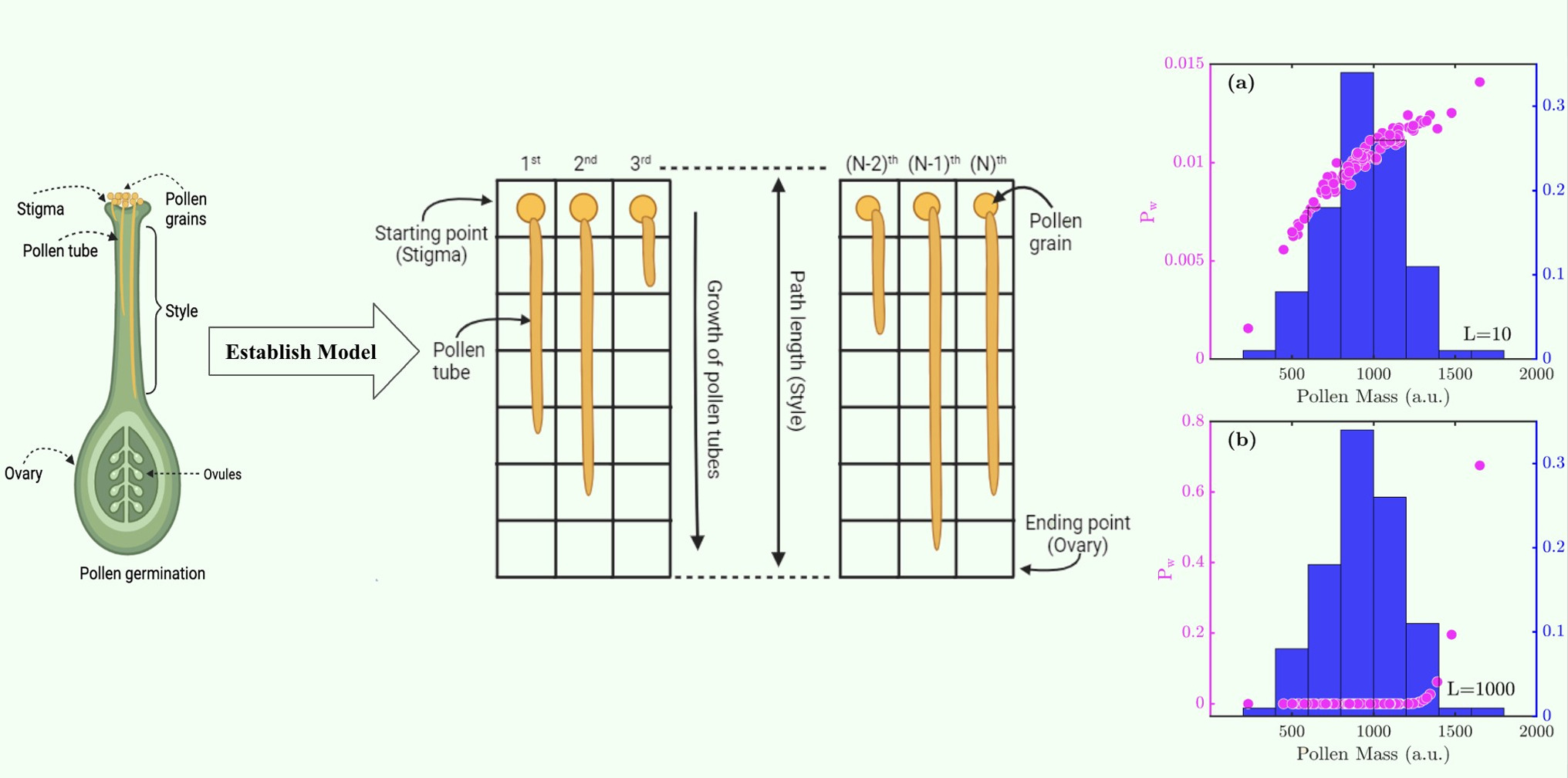https://doi.org/10.1140/epje/s10189-025-00501-7
Regular Article - Living Systems
Stochastic dynamics in determining fertilization outcomes in plants: effect of gamete number and pollen tube travel path length
1
Department of Physics, Indian Institute of Technology, 181221, Jammu, India
2
Department of Electrical and Computer Engineering, University of Nevada, 89154, Las Vegas, NV, USA
3
Department of Biosciences and Bioengineering, Indian Institute of Technology, 181221, Jammu, India
Received:
27
February
2025
Accepted:
12
June
2025
Published online:
8
July
2025
Plants may enhance seed fitness by favoring fertilization by pollen grains with superior genetic qualities. Pistil traits, such as style length and stigmatic area, are thought to influence this selection, but the mechanisms remain unclear. The impact of stochastic factors on pollen germination time variations is also not fully understood. To investigate this, we simulated a biophysical model using the Monte Carlo method to study how gamete number and pollen tube travel path length affect pollen selection. Our results show that longer travel paths (style lengths) and greater pollen loads on the stigma increase the probability of genetically superior pollen fertilizing ovules. It is because longer styles and more pollen load suppress stochastic effects, promoting seed fitness by favoring superior pollen. We also identify a tradeoff between the benefits of increased path length or pollen load and the resource costs incurred.
Supplementary Information The online version contains supplementary material available at https://doi.org/10.1140/epje/s10189-025-00501-7
Copyright comment Springer Nature or its licensor (e.g. a society or other partner) holds exclusive rights to this article under a publishing agreement with the author(s) or other rightsholder(s); author self-archiving of the accepted manuscript version of this article is solely governed by the terms of such publishing agreement and applicable law.
© The Author(s), under exclusive licence to EDP Sciences, SIF and Springer-Verlag GmbH Germany, part of Springer Nature 2025
Springer Nature or its licensor (e.g. a society or other partner) holds exclusive rights to this article under a publishing agreement with the author(s) or other rightsholder(s); author self-archiving of the accepted manuscript version of this article is solely governed by the terms of such publishing agreement and applicable law.





